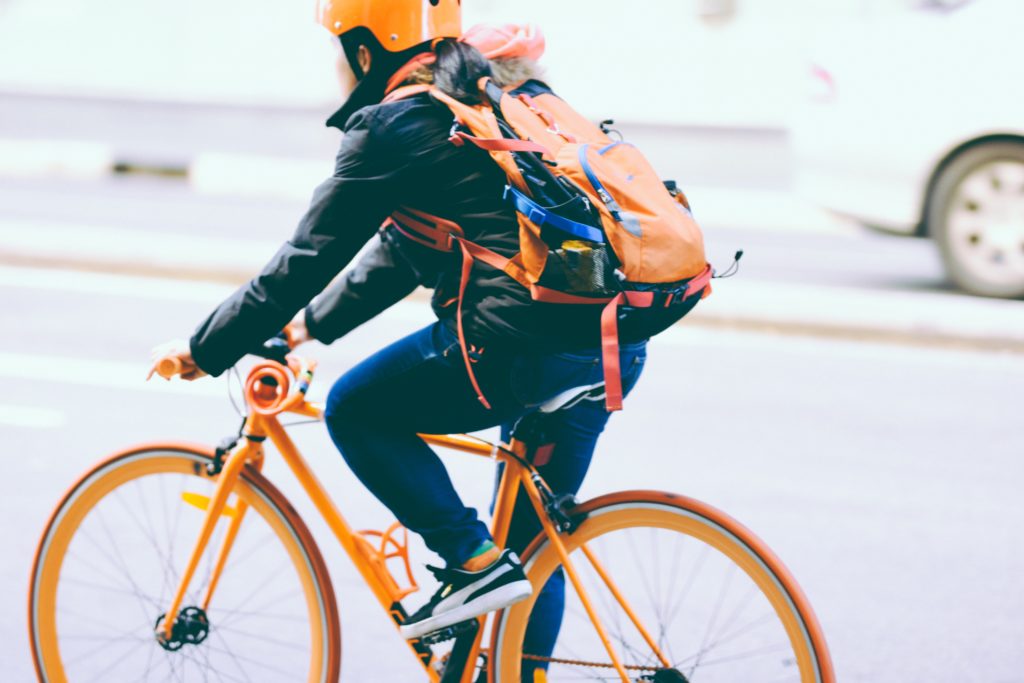Bike lanes are supposed to make it safer for cyclists and motorists by keeping the two groups apart. But many cyclists don’t seek out bike lanes, and when a street has one, the choose to ride in the lane with the cars and trucks. Why? For safety.
In California, the law requires cyclists to ride in bike lanes if they are traveling slower than the flow of traffic. If there are no bike lanes, then the cyclist can ride in the lane along with the motor vehicles, even if they can’t keep up. However, then they are supposed to stay on the right-hand side of the lane and allow cars to pass them if they are riding slower.
Safety in Bike Lanes
Many studies show that bike lanes reduce accidents, injuries and fatalities. A 2012 study concludes that Class II bike lanes (marked by stripes and signage) reduce injuries by as much as 50 percent, and up to 90 percent if the lane is protected by a physical barrier (Class IV) and not just lined with a paint strip.
So, done deal, right? Why not just ride in the bake lane and reduce your chances of injury by 50 percent? The problem here is the other 50 percent. The paint strip doesn’t stop certain drivers from:
- Moving into bike lane to park.
- Moving into bike lane too early to take a right-hand turn.
- Moving from parked position from curb into bike lane.
- Opening car door opened from parked car between curb and bike lane.
- Hitting cyclist who swerved into traffic lane to avoid dooring, object or illegally parked car.
All of these happen routinely in a Class II bike lane causing many cyclists to opt out. But is opting out the only alternative?
Five Ways to Safely Ride in a Bike Lane
- Don’t assume you are safe in a bike lane. While a cyclist has the right-of-way and cars are not supposed to be in the lane, this doesn’t stop motorists from entering the lane illegally.
- Look out for doors. Ride with an eye out for parked cars and any movement you see inside the car. A sudden door opening can be deadly.
- Look out for objects in lane. Keep the other eye open for anything that can be blocking or taking up space in the bike lane. Trash cans, cones, scooters or ebikes can all block a bike lane and create a hazard.
- Delivery, cabs, rideshare and busses. All of these routinely use the bike lane to do their business. Municipal buses are the only vehicles in California that are allowed to be in a bike lane. All others are not, but a wise cyclist keeps a third eye out for them as well.
- Know the law. Bike lane laws in California allow exceptions to staying in a bike lane. CVC 21208 says that a cyclist is required to ride in a bike lane where there is one if the cyclist is traveling at a speed less than the normal speed of traffic, Except:
- When overtaking and passing another bicycle, vehicle, or pedestrian within the lane or about to enter the lane if the overtaking and passing cannot be done safely within the lane.
- When preparing for a left turn at an intersection or into a private road or driveway.
- When reasonably necessary to leave the bicycle lane to avoid debris or other hazardous conditions.
- When approaching a place where a right turn is authorized.
Don’t Ride in a Bike Lane
If you are not riding slower than the normal flow of traffic, you don’t have to ride in the bike lane. Let’s be practical for a moment, if the road’s limit is 35, and the cars are going 25 to 40, then this isn’t possible, but in many inner-city streets, the speed limit is 25 or 30, and traffic can only go so fast. So, if a cyclist wants to stay out of the bike lane, then he or she can go with the flow.
Also, not all streets have bike lanes, so you can choose routes without them and ride in traffic. But remember the studies, this could increase your chance of an injury by 50 percent.
Five Ways to Safely Ride Outside a Bike Lane
- Take the lane. Don’t ride too far to the left or right. This tempts the car behind you to pass. It’s your lane, take it.
- Keep up with traffic. If you can stay with traffic, you don’t have to worry about cars passing you which in a major cause of bicycle crashes.
- Think like a car driver. Look at your surroundings like a car driver. Don’t lane split and enter the bike lane when it suits. Ride like a driver.
- Watch out for blind spots. Driving in traffic means that you are probably in someone’s blind spot at any given time. Bikes have a lower profile, so blind spots become larger and more dangerous.
- Make sure you stop. As a “driver” you have to obey all traffic laws including stopping. Many cyclists fudge this because they have to exert the energy to start up again.
The best thing to do to keep safe is to use common sense and be vigilant. The law gives you some leeway, but you have to make the choice that will keep you the safest.

